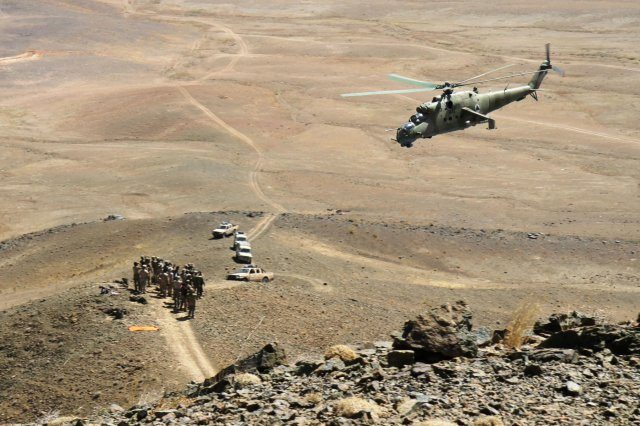Recently, POGO reported on the failed attempt to provide C-27A Spartan aircraft to the Afghans in order to fulfill their medium airlift requirements. Now, the successor effort to replace the C-27As with C-130Hs is also experiencing turbulence. Fortunately, after the Special Inspector General for Afghanistan Reconstruction (SIGAR) sounded the alarm, a congressional committee has taken action to prevent a further waste of money.
In 2008, the Pentagon began an initiative to provide C-27As to the Afghan Air Force; however, the program was cancelled in 2012 due to poor planning and mismanagement by the Pentagon. The sixteen C-27As that were delivered to Afghanistan have been sitting unused on a runway in Kabul since then. Though the contract required that the aircraft be flown a minimum of 4,500 hours from January to September 2012, the Department of Defense Inspector General determined that the aircraft had only been flown a total of 234 hours during that time period.
The primary reason for the program’s problems and eventual cancellation was that Pentagon procurement officials and defense contractors failed to ensure the availability of critical spare parts necessary to operate and sustain the aircraft. The Pentagon spent close to half a billion dollars on this botched effort.
Following the C-27A failure, the Pentagon moved to provide C-130H Hercules, a large four-engine transport aircraft previously used by the U.S. Air Force, to the Afghan Air Force with two being delivered last year and another two slated for this year. These aircraft, like the C-27As before them, are intended to transport soldiers, supplies, medical evacuees, and VIPs across Afghanistan’s rugged and mountainous terrain.
However, the SIGAR, John Sopko, who is tasked with evaluating and auditing U.S. expenditures in Afghanistan, has concluded that the two existing C-130s stationed in Afghanistan are being underutilized, and that the further delivery of an additional two C-130s should be shelved.
Sopko and his team analyzed the two C-130s’ flight data and compared it with the aircraft’s maximum flight capacity to determine whether the Afghans were fully utilizing the two aircraft in their possession. SIGAR concluded that the two C-130s were capable of flying a maximum of 555 hours from October 2013 to May 2014, yet the Afghan Air Force’s C-130s only flew 261 hours during that time period—48 percent of the aircraft’s maximum flying capacity.
Furthermore, SIGAR analyzed the amount of cargo and passengers that were being flown onboard the two C-130s to determine if less expensive means of transportation would have been more appropriate. SIGAR found that the C-130s were carrying only half of their maximum capacity, and most of the flights carried only passengers and light cargo, both of which, SIGAR found, could be transported using existing smaller aircraft and ground vehicles.
Ultimately, Sopko strongly recommended that the two additional pending C-130s not be delivered to Afghanistan. According to the Air Force estimates cited in SIGAR’s report, ending the delivery of just one additional C-130 would save more than $40 million in procurement, maintenance, training, and modifications through 2017.
Sopko also noted that, similar to the C-27A, there were problems with sustaining and maintaining the Afghan’s C-130s. “Issues with sustaining U.S.-funded infrastructure and equipment in Afghanistan are not new….However, the opportunity exists with the C-130s to ensure that the Afghans are capable of supporting what we have already given them before providing additional aircraft,” Sopko wrote in a letter to Secretary of Defense Chuck Hagel and other military leaders that accompanied his C-130 report.
Following Sopko’s letter, the Senate Appropriations Committee included language in its annual defense appropriations bill that would prohibit the additional transfer of C-130s to Afghanistan until the Department of Defense conducts a review of current Afghan Air Force requirements. Overall, the bill recommends providing $4.1 billion for the Afghan Security Forces, which includes the Afghan Air Force, in Fiscal Year 2015.
Given the absolute failure of the C-27A program, the Pentagon must ensure the operational value of providing additional fixed wing aircraft to the Afghans before delivering additional assets. The United States spent tens of billions of dollars training and equipping the Iraqi military, but it is still unable to field an effective Air Force with which to repel violent militants attempting to destabilize Iraq.
So far, the United States has spent more than $56 billion on the Afghan military. The Pentagon must do more to ensure that this funding is not being wasted.










